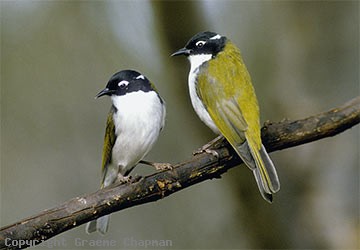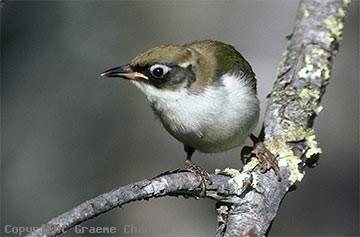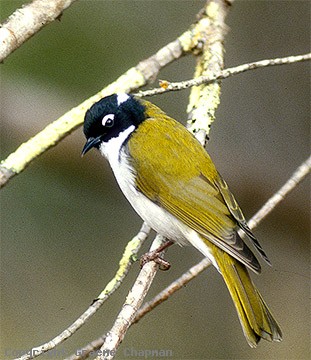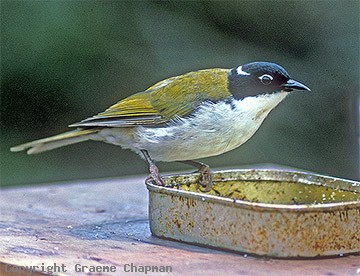Australian BirdsWestern White-naped Honeyeater
|
The Western White-naped Honeyeater was first listed as a species separate from its eastern counterpart in The Handbook of Western Australian Birds published in 2004.
Restricted to the wetter south-western corner of Western Australia it differs in appearance from the White-naped Honeyeater from eastern Australia mainly in the colour of the bare skin around the eye, rich red in eastern birds and almost white in adults from the west. (pale bluish-white in young birds) Western birds also have a longer, heavier bill.
There have been some recent misguided efforts to rename them Swan River Honeyeater, or even Gilbert's Honeyeater after the famous field worker who worked for John Gould in the 1800s, because despite their superficial resemblance, recent studies have revealed that eastern and western birds are not so closely related. Nevertheless the name Western White-naped is consistent with other usage such as Western Spinebill, Western Thornbill and Western Wattlebird all of which have similar equivalents in the east. Western White-naped Honeyeaters have apparently declined in numbers in recent years and are no longer common in the Swan River district. They occur in the humid and sub-humid forests of the south-west from the Moore River through to just east of Esperance, and show a preference for eucalypts. |

978201 ... Western White-naped Honeyeaters, adult, Glen Forrest W.A. |

978202 ... Western White-naped Honeater, juvenile. |

978203 ... Western White-naped Honeyeater |

978204 ... Probably seeking rainwater, not sardines! |
